Introduction
Nuclear waste management is not only a technical-technological challenge – the social dimension is just as significant. Solutions that are not acceptable to the general public cannot be considered, even if they are technically feasible. For this reason, the storage of components with a lifetime of tens or hundreds of thousands of years poses a particular challenge in the management of nuclear waste. One solution to this problem is the so-called P&T (partitioning and transmutation). During partitioning, the different components of nuclear waste are separated (partitioning will no longer be discussed here), and those with long half-lives are transformed by artificial transmutation[1]. During transmutation, the material is exposed to gamma or particle radiation, which results in the formation of other nucleus/nuclei that are stable or rapidly decompose.
In 2018, professors Toshiki Tajima and Gerard Mourou initiated the setting-up of an international scientific consortium to create a molten salt transmutator based on laser-based neutrons. At the four conferences held since then, the outline concept of the transmutator has been laid out with the collaboration of the international scientific community and amidst the interest of the industry. And with the establishment of four scientific pillars, the major scientific and technological challenges have also been addressed.
According to p. 8 of the 1096/2019. (III.8.) governmental decree, the Hungarian government has decided to launch the (laser) nuclear waste management project, in line with increasing the utilization of the ELI-ALPS Laser Research Institute. Within the framework of this, they have decided to support the development of a laser-based neutron source for transmutation as a national research program with a total of 3.5 billion forints for three years, and has commissioned the University of Szeged to coordinate the work of an international consortium in order to successfully implement the project. The three institutions are the Ecole Polytechnique in Paris, whose professor is Gerard Mourou; the California-based TAE, whose scientific director is Professor Toshiki Tajima; and the University of Szeged. The Memorandum of Understanding signed by the parties on 5 April 2019 is intended to provide the framework for the successful implementation of the project by the three institutions, with the involvement of additional partners.
The primary aims of the project are (i) to demonstrate high efficiency generation of DD fusion neutrons via laser based interactions, and (ii) research and develop technologies for high yield production of fusion neutrons at high repetition rate (1 kHz and above). Moreover, theoretical and practical feasibility of advanced aspects of a laser-driven transmutator of spent nuclear waste will also be investigated.
The project is implemented partly in the laboratories of the University of Szeged, and to a greater extent at the ELI-ALPS laser research centre, with equipment already in operation and to be turned on in the future. In the latter, the experiments will be carried out by the University of Szeged and its partners as distinguished, constant users, contributing to the implementation and further development of ELI in accordance with its scientific strategy. During the project, USZ will take part in wide international networking towards the establishment of an international consortium for a preparatory phase of a laser based transmutator.
The project implementation, as a priority government project carried out from the resources of the central budget, was started as of July 2019 and coordinated by the Strategic and Development Directorate (SFF) of USZ. Upon the establishment of the grid of National Laboratories of Hungary, since August 2020 the project is being implemented as the National Laser-Initiated Transmutation Laboratory.
[1] The term transmutation in itself means nuclear transformation, which can also occur naturally, e.g. by radioactive decay or the nucleosynthesis taking place in stars. We only talk about artifical transmutation hereafter.


